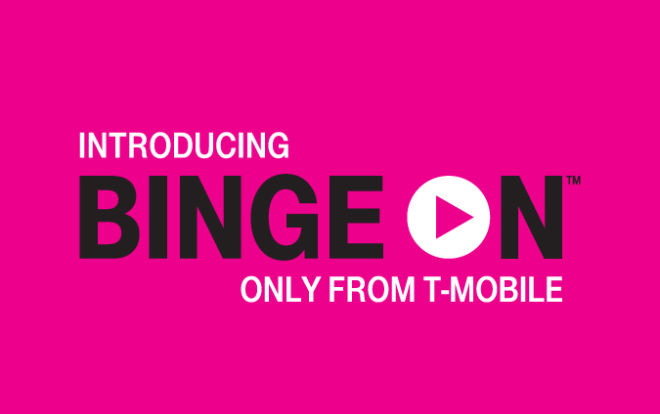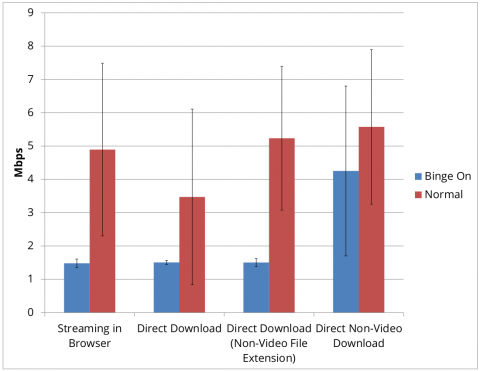Binge On criticisms continue with EFF report that says T-Mobile’s service is ‘just throttling’
Binge On has been the target of a lot of criticism lately, most notably from YouTube, which said that T-Mobile was “throttling all video services” on its network. Now another big report has come out that condemns T-Mo’s big Un-carrier move.
The Electronic Frontier Foundation today published a new report on Binge on that says that, despite T-Mobile’s claims to the contrary, Binge On is throttling. The EFF conducted several tests using a T-Mobile phone that had a strong 4G LTE connection and measured the throughput. The tests included streaming an HTML5 video on a web page, downloading a video to an SD card, downloading a video with a file name that didn’t indicate that it was a video, and downloading a large file that wasn’t a video. Each test was conducted twice: once with HTTP on so that T-Mo could see the file being accessed, and once over HTTPS so that T-Mo couldn’t see the content.
In its testing, the EFF found that T-Mobile throttled all video streams to a speed of approximately 1.5Mbps, regardless of the connection that the phone had and what video was being played. That includes both videos being streamed and videos being downloaded to the phone to be viewed later. The EFF says that T-Mobile’s Binge On doesn’t actually change the video being served to the user in any way. T-Mobile is just slowing the throughput to 1.5Mbps, and if the server doesn’t have a way of adapting and lowering the quality of the video, the user will see stuttering.
The EFF also found that T-Mo is slowing the connection of downloads that aren’t obviously video. When asked if T-Mobile is looking at files more deeply than HTTP headers, it said that it does have ways to detect attributes specific to videos that don’t involve looking at the content itself.
In response to the EFF’s report, T-Mobile confirmed that it does not optimize the video streams beyond reducing the bandwidth. The ball is then in the court of the video provider to respond and serve up a video that will work with the reduced bandwidth. And as I mentioned before, if the provider doesn’t adapt, the user sees stuttered video.
This EFF report is a pretty big knock against Binge On. On paper, the service sounds great because it’ll let you use your high-speed data on things other than streaming video. As I’ve said before, though, T-Mobile should not have automatically enabled Binge On for everyone. It does say on the Binge On product page that “Binge On is automatically enabled so your data will stretch 3 times further when you are streaming video” and that it optimizes “almost all other video streaming” outside of the 24 services with free Binge On streaming. However, I’ve seen a lot of people wondering why their YouTube videos are low quality. If T-Mobile made Binge On opt-in rather than opt-out, then only folks that are actively seeking the “optimizations” that Binge On offers would get them. Then perhaps there wouldn’t be as many people using Binge On, though, which would mean less data savings for T-Mo.
Given all of the brouhaha that’s surrounding Binge On, which includes YouTube’s complaint, today’s report, and an FCC inquiry, it’s starting to feel like T-Mobile is going to have to respond in a meaningful way. It’s certainly going to be interesting to see what happens in the coming weeks.
Source: EFF


